.
.
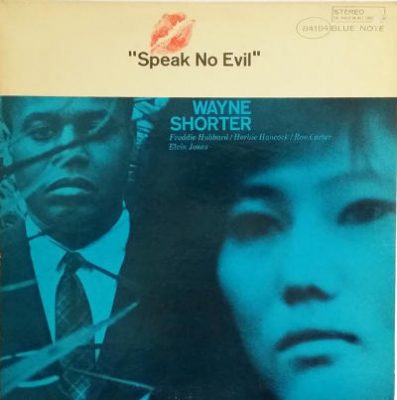
Speak No Evil, a 1964 recording session by saxophonist Wayne Shorter (released in 1966), was among those listed by noted critics, authors and musicians as their all-time favorite Blue Note albums
.
__________
.
“Reminiscing in Tempo” is part of a continuing effort to provide Jerry Jazz Musician readers with unique forms of “edu-tainment.” As often as possible, Jerry Jazz Musician poses one question via e-mail to a small number of prominent and diverse people. The question is designed to provoke a lively response that will potentially include the memories and/or opinion of those solicited.
Since it is not possible to know who will answer the question, the diversity of the participants — and the number of them — will often depend on factors beyond the control of the publisher.
The responses from the people who chose to participate in this edition are published below with only minor stylistic editing. No follow-up questions take place.
.
.
_____
.
.
In this edition, we ask the question:
“What are 4 or 5 of your all-time favorite Blue Note albums?”
.
*
.
Many thanks to all of our participants, whose partial biographies accompany their response. For more complete information about each participant, click on the link under their photograph.
Readers are invited to share their own lists by using the comments field at the conclusion of this feature.
.
.
_____
.
.

.
Grammy Award-winning jazz singer; NEA Jazz Master; Blue Note recording artist (1987 – 2009); currently records for Concord Jazz
.
.
___
.
Maiden Voyage, Herbie Hancock
Hub Tones, Freddie Hubbard
Blue light Til Dawn, Cassandra Wilson
Speak No Evil, Wayne Shorter
Civilization, Tony Williams
.
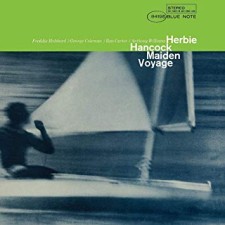 |
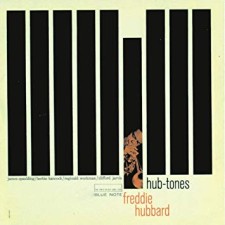 |
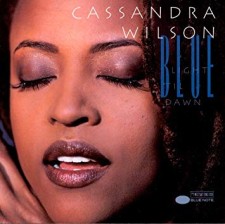 |
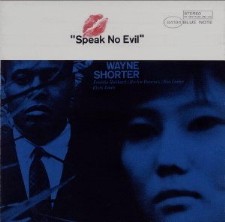 |
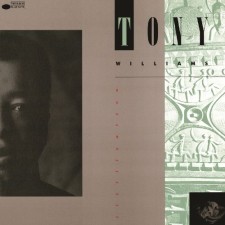 |
..
.
_____
.
.
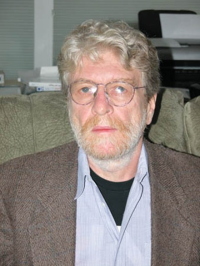
Producer; co-founder, Mosaic Records; leading discographer of Blue Note Records
.
___
.
All time Favorite Blue Note albums (a list that changes daily):
Sam Rivers – Fuchsia Swing Song
The creative Boston triumvirate (Sam, Jaki Byard and Tony Williams) in all their brilliant glory with Ron Carter to round things out.
.
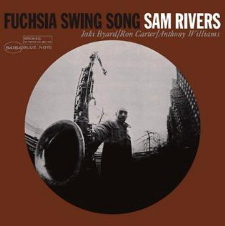
.
Art Blakey – Mosaic
This sextet version of the Jazz Messengers was filled with men who were magnificent soloists. and. composers. This album shows the range and high level writing and playing of an amazing band.
.
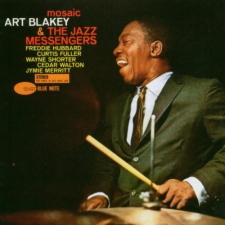
.
Andrew Hill – Black Fire
His Point Of Departure may have been a superior effort on many levels, but Black Fire was the first record to put Andrew Hill’s playing style and compositions in bold relief with three of the best musicians of the era: Joe Henderson, Richard Davis and Roy Haynes.
.
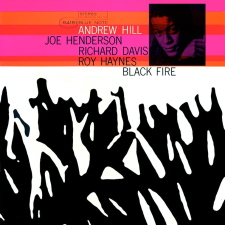
.
Horace Silver – Song For My Father
After six years with essentially the same working band, Horace was due for some regeneration and he found it in this crackling quintet with Joe Henderson, Carmell Jones and the highly underrated Roger Humphries.
.
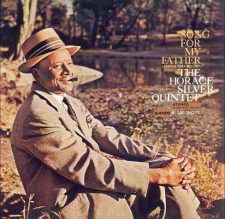
.
Dexter Gordon – Go
This was Dexter’s favorite album of his entire discography and rightly so. The rhythm section of Sonny Clark, Butch Warren and Billy Higgins was one of Blue Note’s finest. A perfect album.
.
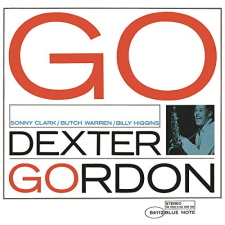
.
And then here’s Jackie McLean and Herbie Nichols and Thelonious Monk and Hank Mobley and Sonny Clark and Freddie Hubbard and Lee Morgan and…
.
.
_____
.
.

Editorial Director, WBGO; former critic, .New York Times; .eleven-time winner of the Helen Dance-Robert Palmer Award for Excellence in Writing, presented by the Jazz Journalists Association; author of .Playing Changes: Jazz For the New Century (Pantheon)
.
___
.
Here are five favorite albums on Blue Note, The years I’ve listed are for release date, not recording date:
Wayne Shorter, Speak No Evil. (1966) – A watershed, among the greatest statements from one of our leading composers. But it’s also a gem for the impeccable musicianship: some primo Freddie Hubbard, and a rare, exquisite alignment of Herbie Hancock with Elvin Jones. This would be on my short list of favorite albums, period.
.

.
Eric Dolphy, Out to Lunch .(1964) – Has there ever been a more persuasive balance of post-bop fluency and avant-garde expedition? I’m hard-pressed to single out what makes it special: Dolphy’s great, gulping bass clarinet, and pointillist flute; Bobby Hutcherson’s boundless vibraphonics; Tony Williams and Richard Davis stretching time; Hubbard again, at his best.
.
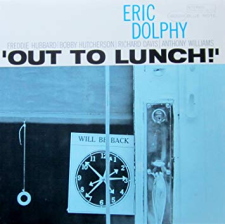
.
John Coltrane, Blue Train.(1958) – One of the first jazz albums I ever owned, Blue Train epitomizes an earthy hard-bop style that Coltrane quickly left in his rearview, though not without some fondness. I’ve heard it maybe thousands of times, and it’s always fresh. (The trumpet solo on “Moment’s Notice,” by 19-year-old Lee Morgan, has never lost its capacity to awe.)
.
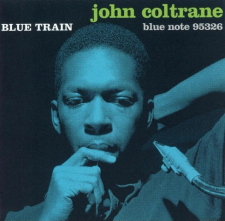
.
Dexter Gordon, Our Man in Paris .(1963) – Not a quintessential “Blue Note record,” the way you’d use that phrase to describe the work of Grant Green or Jimmy Smith. But this is Dexter in full glory and garrulosity, luxuriating in the art of bebop with two of its expat architects, Bud Powell and Kenny Clarke. Fantastic from start to finish, with a “Night in Tunisia” for the ages.
.
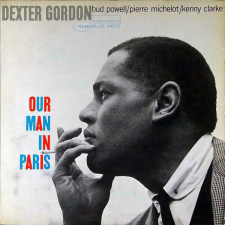
.
Ambrose Akinmusire, Origami Harvest. (2018) – Obviously an outlier on this list, but I feel obliged to note that Blue Note’s legacy continues in a very present tense. This was my top album of 2018, a wildly ambitious statement that brings Akinmusire’s trumpet into urgent dialogue with spoken-word hip-hop, chamber strings and ambient electronics. Utterly of its moment.
.
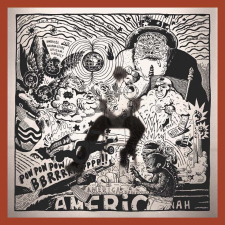
.
.
_____
.
.
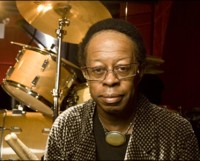
.
Legendary jazz drummer; Blue Note recording artist
.
___
.
I would like to offer the following four records which were made on Blue
Note.
1. Six Pieces of Silver by Horace Silver
2. Blowing The Blues Away by Horace Silver
3. Serenade For Horace by Louis Hayes
4. Undercurrent by Kenny Drew
.
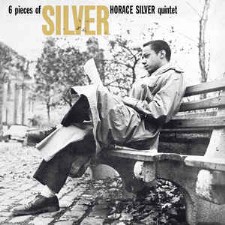 |
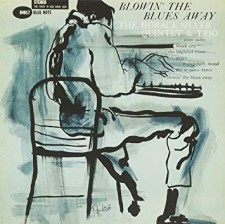 |
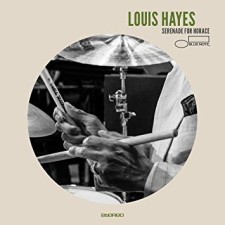 |
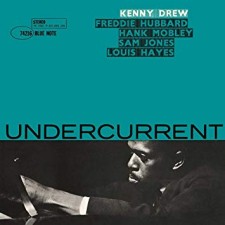 |
.
.
_____
.
.
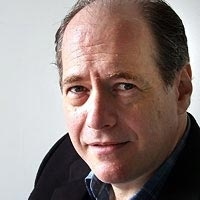
Critic; biographer; author of several books on jazz and film — most recently .Bing Crosby, Swinging on a Star: The War Years, 1940 – 1946; six time recipient of ASCAP-Deems Taylor Award; Guggenheim Fellowship; Peabody Award in Broadcasting
.
___
.
It’s perhaps not so odd that a very broad question permits a broad answer while a more narrow one demands a more personal, detailed response. I’ve organized my list by recording dates, not release dates, which Blue Note often delayed, and I chose mostly Blue Note albums that I bought when they were new or when I was new and played to death, each redolent of a different moment, and none I can imagine life without. In that sense, the list is as autobiographical as it is critical. Of course, as soon as I typed them out, I thought how insufficient it was. Only one Blakey, one Mobley, no Lee, Joe Hen, Freddie, Cannonball, Ed Hall, Quebec, Jimmy Smith, and only one album from the entire Bruce Lundvall reboot? Please note that 1964 was a true. annus mirabilis.
1939-1951: Sidney Bechet, Jazz Classics Vol. 1
1947: Thelonious Monk, Genius of Modern Music, Vol. 1
1949-1951: Bud Powell, The Amazing Bud Powell, Vol. 1
1954: Art Blakey, A Night at Birdland, Vol. 1
1957: John Coltrane, Blue Train
1957: Sonny Rollins, A Night at the Village Vanguard
1960: Freddie Redd, The Music from The Connection
1960: Hank Mobley, Soul Station
1962: Dexter Gordon, GO
1963: Grant Green, Idle Moments
1963: Jackie McLean, Destination…Out!
1964: Horace Silver, Song for My Father
1964: Andrew Hill, Point of Departure
1964: Eric Dolphy, Out to Lunch!
1964: Herbie Hancock, Empyrean Isles
1964: Sam Rivers, Fuchsia Swing Song
1964: Wayne Shorter, Speak No Evil
1965: Bobby Hutcherson, Components
1965: Ornette Coleman, At the “Golden Circle” Stockholm. Vol. 1
1966: Cecil Taylor, Unit Structures
1994: Geri Allen, Twenty One
.
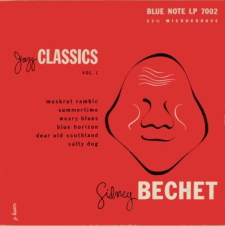 |
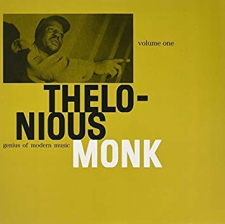 |
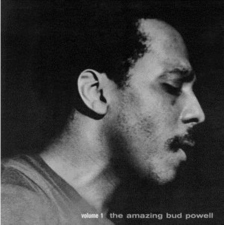 |
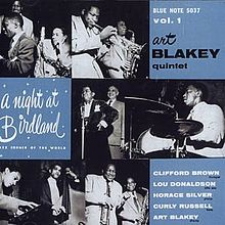 |
 |
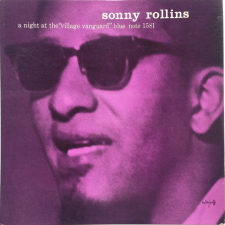 |
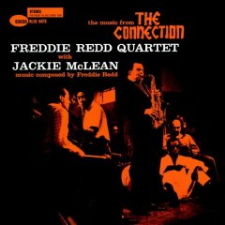 |
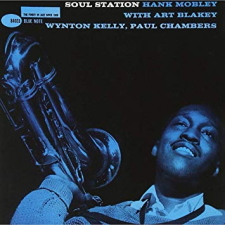 |
 |
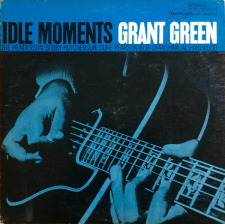 |
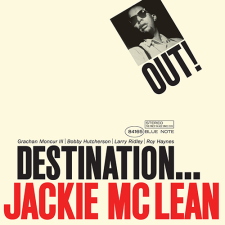 |
 |
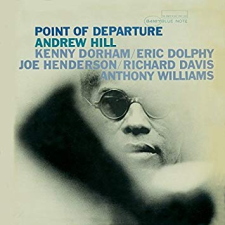 |
 |
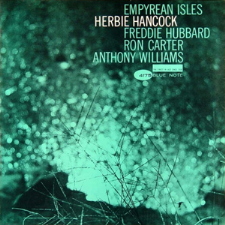 |
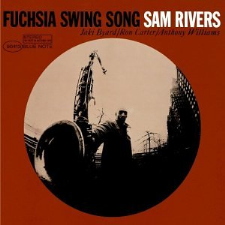 |
 |
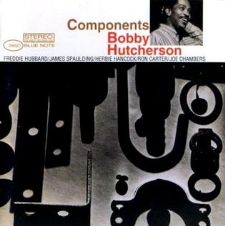 |
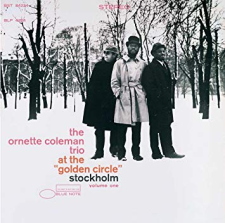 |
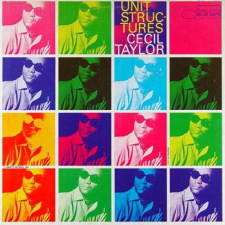 |
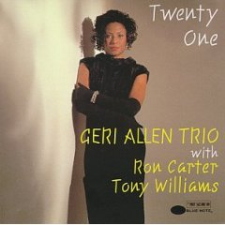 |
.
.
_____
.
.
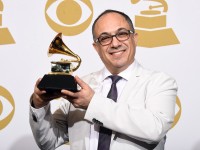
Grammy Award-winning American music historian; author; journalist; producer
.
___
.
Asking for just 3 to 4 Blue Note albums is a helluva challenge first because of the sheer number of musically consistent and historically significant titles that label produced—and that was just the first thirty years, from ’39 to ’69! Add another 50 to that timeline—the label’s never been inactive save for a few dormant years around 1980—and you get the idea: this is a huge thing to ask. There’s too many legends, too many classic recordings, too many hidden gems in the voluminous catalog to effectively distill the Blue Note spirit and sound to just three or four albums. Throw in the idea of personal taste, forever in flux, and any choices will necessarily reflect one point in time; ask me again next Thursday and my list is sure to be vastly different.
So what—as a certain jazzman once said. I’ll take on this task with the idea of identifying a few of those obscure treasures deserving their own moment in the spotlight, alternate doorways into the history that Blue Note is still, amazingly, in the process of creating.
So for now—that is, Sunday, May 26, 2019, at 12:30 or so—here are my top choices:
Hot Jazz on Blue Note. (4CD, 1996; produced for Smithsonian Institution Press). OK, this is cheating a bit; this is an anthology rather than an album. But this is such a great listen, and effectively tells the tale of Blue Note’s birth as a label first begun by three jazz revivalists—Alfred Lion, Emanuel Eisenberg, Max Margulis—and later Frank Wolff. This opening, ten-year chapter of the label is far too often overlooked—with music recorded before, during and immediately after World War II, featuring some of the most important instrumentalists who were mostly overshadowed by the swing/big band era: Sidney Bechet, Art Hodes, Albert Nicholas, Sidney De Paris, Mead Lux Lewis, Albert Ammons, Bunk Johnson, George Lewis. Blue Note’s eventual transition to recording modern, bebop and post-bop jazz of course did more to establish the label’s reputation (and effectively leave the label in the hands of Lion and Wolff alone) but the attention to sonic quality, assembling solid rhythm sections, and ensuring top-level performances starts here.
.
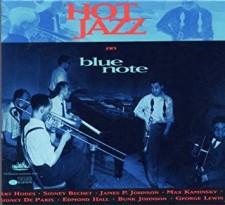
.Herbie Nichols Trio .(1956) — Nichols’s debut on Blue Note was full of promise: a great band (Teddy Kotick and Al McKibbon switching off on bass; Max Roach on drums), solid performances and delightful compositions filled with melodic surprise, structural sophistication and intense originality, like “House Party Starting”, “The Gig”, “Chit Chatting”, and the tune the pianist wrote for Billie Holiday, “Lady Sings the Blues.” Alfred Lion never let go of the hope that he’d run across another compositional piano genius like Thelonious Monk as he had in the late ’40s; one can trace this directive through to Horace Silver, Herbie Hancock (the other Herbie), Andrew Hill, and others. Nichols was the great hope who never happened, sadly never achieving the notoriety he deserved, either in his day or in years since. My feeling is this: any music enthusiast still sleeping on Herbie Nichols can’t rightly call themselves a true Blue Note fan. So get to listening.
.
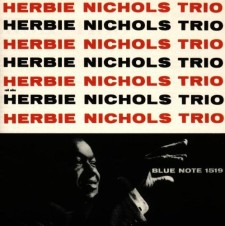
.
Togethering— Kenny Burrell & Grover Washinton Jr. .(1985) — In the rush to shake life back into Blue Note brand in the 1980s, record executive Bruce Lundvall wisely brought a number of veterans back to the fold to do one-off projects, reconnecting the label’s third (or fourth or fifth) chapter to its modern jazz heyday of the 1950s and ’60s. Guitarist Kenny Burrell was one of those reconnections, in this case sharing titular role with the best-selling saxophonist who had by then broken into the mainstream—and whom many now credit as being the father figure to the Smooth Jazz wave (then in mid-swell). Clearly there was a precedent here: Burrell’s 1957 and ’58 collaborations with John Coltrane for Prestige Records (The Cats .and .Kenny Burrell and John Coltrane), were echoed by Washington’s R&B-rich approach to soprano and tenor sax. Yet .Togethering .succeeds for reasons beyond that model: a killer rhythm section (Ron Carter—on electric bass!—drummer Jack DeJohnette and percussionist Ralph McDonald), a healthy, flavorful range of originals (the back-and-forth of “Soulero”, the late-night vibe of “Asphalt Canyon Blues”, the plugged-in bebop of the title track), and the relaxed, palpable camaraderie between these two soloists of standing.
.
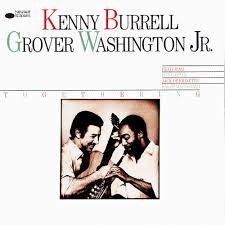
.
Start with those and see where it takes you. Trust me, the Blue Note experience is a lifelong journey.
.
.
_____
.
.

Eliane Elias
Grammy Award-winning singer; Concord Jazz recording artist; pianist; composer; arranger; recorded 14 albums for Blue Note Records from 1987 – 2008
.
___
.
Thanks for inviting me to participate on this. Some of my favorite Blue Note Albums are:
Speak Like a Child, Herbie Hancock
Inventions and Dimensions, Herbie Hancock
Speak no Evil, Wayne Shorter
Sidewinder, Lee Morgan
And I’d like to 2 of my own recordings amongst the 14 albums I released on Blue Note:
Eliane Elias Plays Jobim from 1989 and Bossa Nova Stories from 2009
.
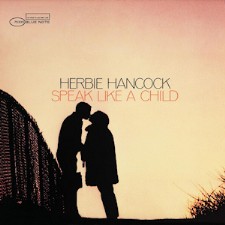 |
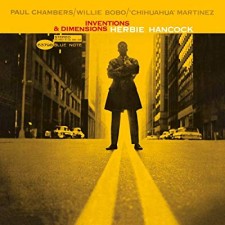 |
 |
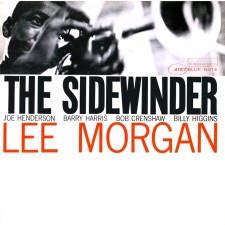 |
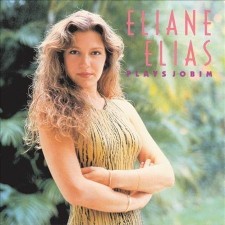 |
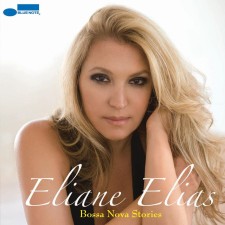 |
.
.
_____
.
.

Singer; saxophonist; recording artist; leader of Karl Denson’s Tiny Universe; touring saxophonist with the Rolling Stones
.
___
.
Wayne Shorter: Speak No Evil and Odyssey Of Iska – Wayne Shorter is my all time favorite musician/artist and these two records give a complete picture of the breadth of his work. Speak No Evil is a collection of songs which all became jazz standards, each with a nice verse upfront. Odyssey of Iska is a musical ending (his last Blue Note record) and a jumping off point for all of jazz.
.
 |
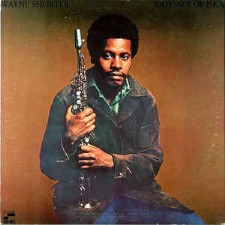 |
.
Herbie Hancock: The Prisoner – This record is just flat-out beautiful; amazing songs, great players and gorgeous arrangements.
.
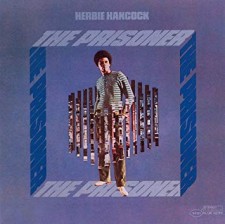
.
Lee Morgan: The Sidewinder – I know Herbie kind of did it first with “Watermelon Man,” but this record to me seems like the beginning of funk.
.

.
Joe Henderson: Inner Urge – My favorite album by my favorite sax player.
.
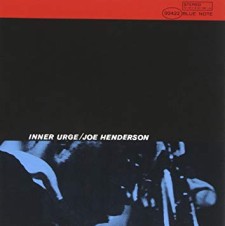
.
.
_____
.
.

.
Investigative journalist; special correspondent for .Vanity Fair; .author of Sticky Fingers: The Life and Times of Jann Wenner and Rolling Stone Magazine
.
___
.
Five Blue Note albums. Two notes. Maiden Voyage was my original gateway into jazz. A headphone session in a library listening room turned into an immersive dream one afternoon. I think the cover initially grabbed me. To this day it’s among my very favorite albums, and the song “Little One” is a track I return to again and again, always as fresh as the first time I heard it. The restraint, the intimacy, the pacing — it’s profoundly beautiful. I overpaid for Speak No Evil at The Record Collector in Los Angeles, California, which is owned and operated by an extraordinarily grumpy man who owns half a million records and wants top dollar for every single one of them. I watched him sell a copy of the ubiquitous Sergeant Pepper’s Lonely Hearts Club Band for $45 to a poor woman pushing a toddler in a stroller who was buying it for her husband’s birthday. I was really offended. I confronted him about the prices and he got up in my grill, but seemed to respect my resistance. He gave me a private tour of his collection of 1950’s turntables, tube amps and speakers, which were out back, and then had his sidekick, an odd little man in coke bottle glasses, give me a tour of a gigantic warehouse out back that housed thousands and thousands more records. Later, the owner told me that his wife went to high school with Nina Simone. He ranted and raved about the inferiority of CDs, then showed me a bunch of newspaper clippings taped to the window in which he is quoted ranting and raving about the inferiority of CDs. I figured the whole experience was worth 35 bucks, which is what I paid for this tattered copy of the great Blue Note album by Wayne Shorter.
.
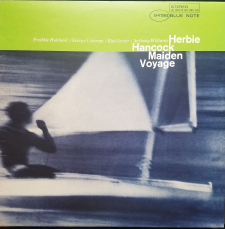 |
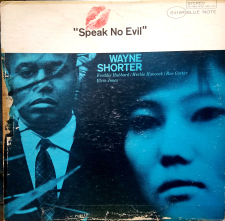 |
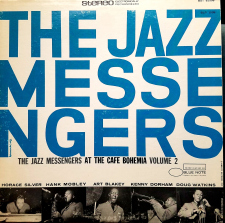 |
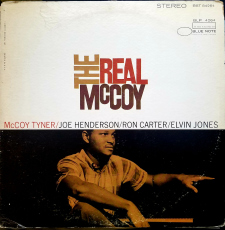 |
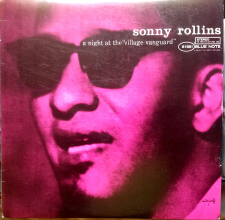 |
.
.
_____
.
.

Lewis Porter
Grammy-nominated author; researcher; educator; pianist; composer
.
___
.
Of course Blue Note has an amazing track record. The level is very high. I was unable to limit myself to 5, but I kept it short by listing the albums that I have listened to the most times over the years. If I were to list a few more, they would include Ornette, Trane, Dolphy, every one that Herbie made as a leader, McCoy, several Blakey albums, Horace Silver, Wayne, etc., etc.
Here’s my list:
.
Bud Powell, The Amazing, Vols. 1 and 2.. This music and the Verve recordings from 1949-51 are Bud at his blindingly brilliant best. Such intensity in every note choice! Some people say Bud is playing Bird on piano. They’re not listening. He’s a deep original.
.
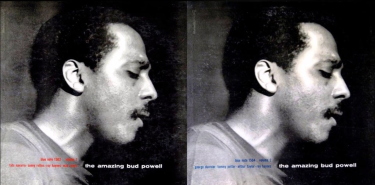
.
Thelonious Monk, Genius of Modern Music, 1 and 2. Of course! By the way, there are a number of incomplete takes that have never been issued, not even on Mosaic, and sadly, probably never will be.
.
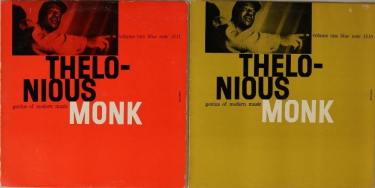
.
Fats Navarro, Fabulous, Vols. 1 and 2. Great melodic playing, for ex. on “The Squirrel.”
.
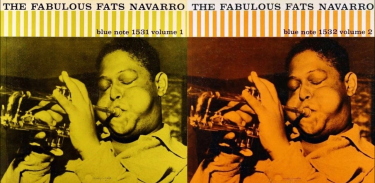
.
Clifford Brown, Memorial Album, and Blakey’s A Night At Birdland, Vols. 1 and 2, featuring Brown. All Brownie is a must!
.
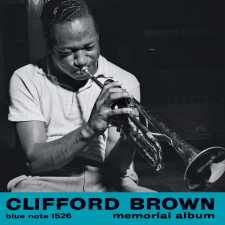
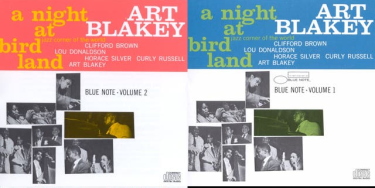
.
Duke Pearson, Wahoo. .One of my personal favorites. On the opening blues, “Amanda,” Byrd and Spalding play great, but Joe Henderson’s screaming solo makes me get up and dance! Bob Cranshaw and Mickey Roker were a regular rhythm team in those days–for example, check them out behind Joe!
.
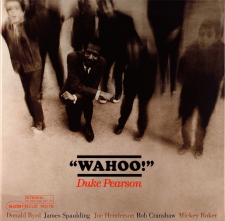
.
Freddie Hubbard, Ready for Freddie.. I could have picked any number of albums by Hubbard as a leader, but this one is a particular favorite of mine. After my Coltrane book came out, Freddie asked me if I would do one like that about him, but it didn’t work out.
.
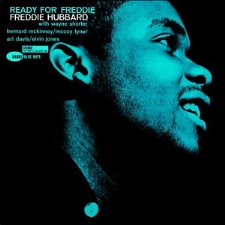
.
And three classics that I probably needn’t say more about:
Larry Young, Unity
Herbie Hancock, Maiden Voyage
Lee Morgan, Sidewinder
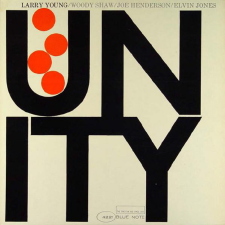 |
 |
 |
.
.
_____
.
.
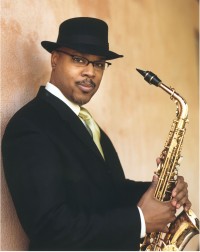
Saxophonist; composer; educator; Blue Note recording artist from 1991 – 2005; founder of Inner Circle Music
.
___
.
Smokestack – Andrew Hill
No Room For Squares – Hank Mobley
Schizophrenia – Wayne Shorter
Newk’s Time – Sonny Rollins
Hub-Tones – Freddie Hubbard
.
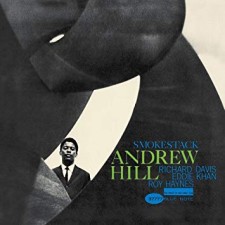 |
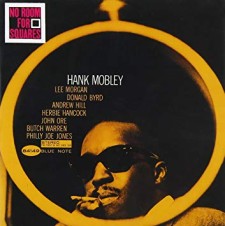 |
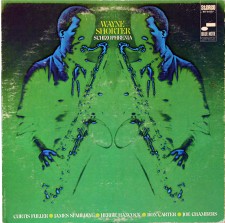 |
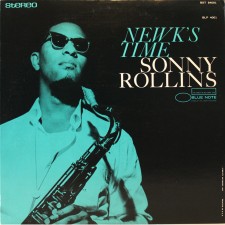 |
 |
.
.
_____
.
.

Founding member of jam band The Disco Biscuits; founder of the jazz trio SPAGA
.
___
.
Combustication (Medeski Martin & Wood) – Jazz has a new name. My entire approach to my instrument has been transformed. Thank you John Medeski.
.
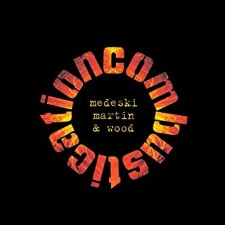
.
A Humdrum Star (Go Go Penguin) – This album recently changed my entire perspective of what you can do with a piano trio in the modern era.
.
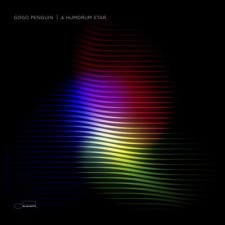
.
Song For My Father (Horace Silver) – I was always fascinated yet overwhelmed with the complexities of Chick or McCoy, but at 15 years old, Horace Silver was approachable for me as a young student trying to understand the math of my instrument.
.

.
Testifyin’ (Benny Green) – Just such a fun album.
.
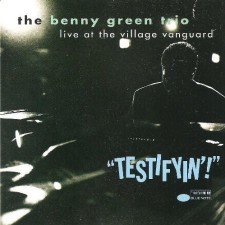
.
Cornbread (Lee Morgan) – Because after “The Sidewinder,” you discover “Cornbread.”
.
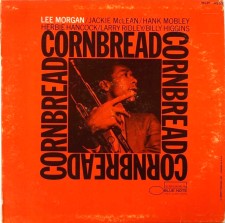
.
.
.
_____
.
.
.
Jazz writer for over 40 years; author of 11 books; reviewed over 20,000 recordings
.
___
.
Being asked to name my 4 or 5 favorite Blue Note albums is a nearly impossible task. There are probably close to 200 Blue Note sets that I would easily recommend. Alfred Lion rarely recorded anything that was less than worthy during 1939-67. I could have tried to name the most “important” sets (including ones led by Bud Powell, Thelonious Monk, Art Blakey, Horace Silver, Herbie Hancock, etc.) but that too is impossible. So instead, here are five of many favorites that listeners should get as soon as possible.
Miles Davis Vol. 1 – This could have been subtitled “The Birth of the Hard Bop” (as opposed to “The Birth of the Cool”) for Davis is featured during 1951-54 playing early hard bop with such sidemen as trombonist J.J. Johnson, tenor-saxophonist Jimmy Heath, drummer Art Blakey and pianist Horace Silver. He helped pave the way for the Jazz Messengers, Lee Morgan and many others before moving onto other approaches.
.
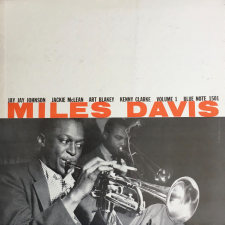
.
John Coltrane – Blue Train – Coltrane’s one Blue Note album was his best recording as a leader up to that point (1957), introduced arguably his finest composition (“Moment’s Notice”), and features some top-notch playing by trumpeter Lee Morgan and trombonist Curtis Fuller.
.

.
Lee Morgan – The Cooker – Lee Morgan led 25 albums for Blue Note (coincidentally the same number as Hank Mobley). ,The Cooker .features him at the age of 19 heading a quintet with baritonist Pepper Adams and pianist Sonny Clark roaring through “A Night In Tunisia” and a rapid “Just One Of Those Things.”
.
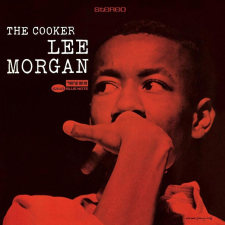
.
Grant Green – The Latin Bit – Many years ago I picked up this Lp for 20 cents, in perfect condition! Green, who was Blue Note’s house guitarist during the first half of the 1960s, is inspired on such unlikely numbers as “Tico Tico,” “Brazil” and “Besame Mucho.”
.
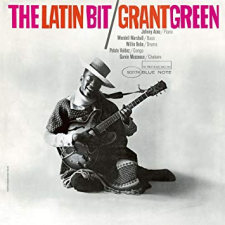
.
Ornette Coleman – At The Golden Circle in Stockholm Vol. 1 – The innovative altoist was in peak form for this 1965 trio date with bassist David Izenson and drummer Charles Moffett, showing that he had become more technically skilled and even more expressive than on his earliest groundbreaking quartet sessions.
.

.
.
_____
.
.

New York-based jazz recording artist; keyboardist; composer
.
___
.
Bud Powell – The Amazing Bud Powell Vol 2— This record is so classic. Classic sounding. And still sounds modern. Classically modern? Alright I’ll stop with that but I mean, beautifully chosen songs and trio arrangements with understated reharms not to mention Bud’s improvising and left hand are genius here. There’s a reason why it’s called ‘The Amazing Bud Powell’. Volume One is great too but the trio format here with Duvivier and Taylor really set a standard for what piano trios seem to follow.
.
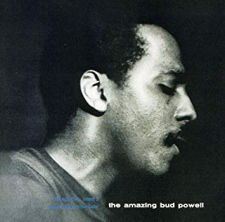
.
Herbie Hancock – The Prisoner — This was probably the first one that came to mind. I’m such a Herbie head and his compositions from this record still sound fresh to me. His lyrical playing and pleasingly dissonant arrangements are ear candy. His use of extended composition on the title track is groundbreaking for the time. Herbie’s improvising on the second half of the record is especially good as he plays loosely and stretches out a good amount. The orchestration is worth noting too with alto flute, bass clarinet, and Herbie’s use of the fender rhodes for the first time on a solo record.
.

.
Larry Young – Unity — This record I bought in the late nineties when I was still in high school. I was at CD Warehouse in Dallas and literally saw this and thought “Elvin playing with an organ player? Larry Young must be good.” I also recognized and admired Joe and Woody. At the time ‘Softy’ was a tune I was playing a lot in the Trane/Vanguard style so the fact that song was on there also appealed to me. I wore that CD out from listening to it so much. Every song on the record is great. Would of been very cool to hear this band live.
.

.
Sonny Clark – Cool Struttin’ — I know I know this record is always listed in those best Blue Note records lists but there’s a reason for that. It’s undeniably killing. Sonny Clark’s touch is so unique and individual. As his comping. His left hand while improvising is understate-ably cool. He’s probably the coolest piano player. As is the dream team of cats on this session. Everyone here plays with 100% conviction. There’s no second guessing or sloppiness. These guys will eat you for breakfast. They make me rethink playing music. It’s masterful, poetic, and bluesy as hell.
.
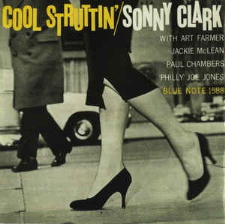
.
Wayne Shorter – Speak No Evil — The way this record opens really sets a tone and vibe for what’s to come. Easy swinging after the intro, but the send off drum fill Elvin plays going into Wayne’s solo out of the head is pretty insane. Wayne’s compositions on this record have all become standard repertoire for cats playing these days. Also getting to hear Herbie with Elvin is cool. Kinda like McCoy with Billy Higgins or even Keith with Blakey.
.

.
.
.

































Out to Lunch, Eric Dolphy
The Cape Verdean Blues, Horace Silver
Odyssey of Iska, Wayne Shorter (thanks Karl Denson for reminding me what a great record this was)
One Step Beyond, Jackie McLean
and the greatest jazz record of all time…
Somethin’ Else, Cannonball Adderley
I love so much Louis Hayes Cronos, King of the Time, great today like great musicians of the past such as Bach and Beethoven. Thanks for your soul , your art, your groove .
Some great choices. My favourites here below…
Evolution- Grachan Moncur
Search for the New Land- Lee Morgan. The title track is an epic, immersive and hypnotic.
Wahoo- Duke Pearson
Basra- Pete La Roca. Far too overlooked!
Night Dreamer- Wayne Shorter. Personally always preferred to Speak No Evil (which of course is still great).
Dialogue – Bobby Hutcherson
Evolution – Grachan Moncur III
Out to Lunch! – Eric Dolphy
Unity – Larry Young
Mosaic – Art Blakey